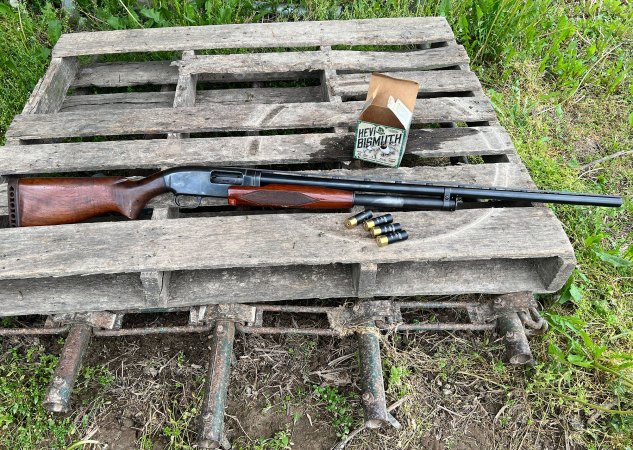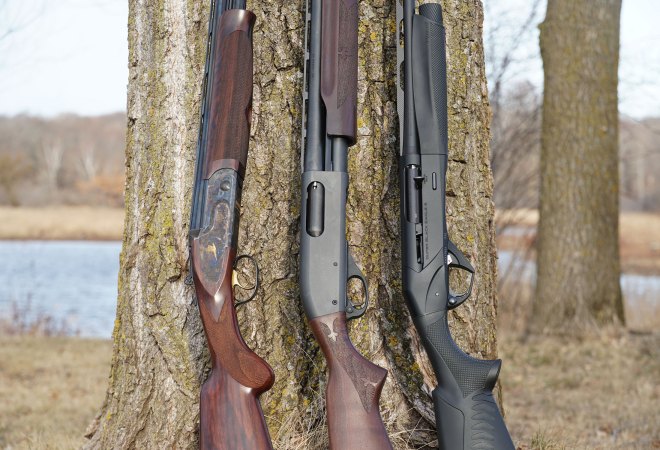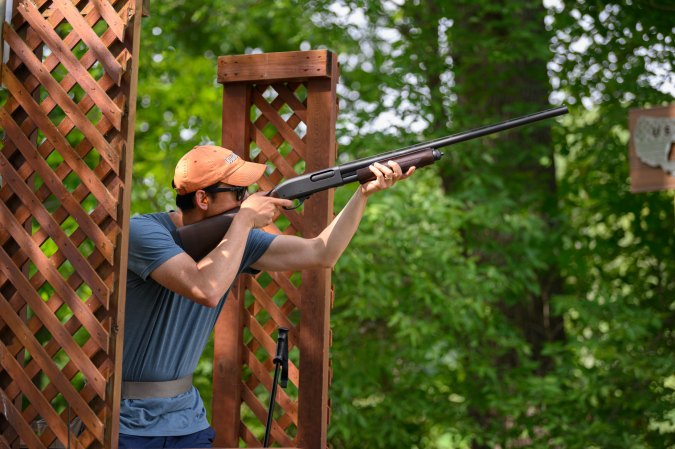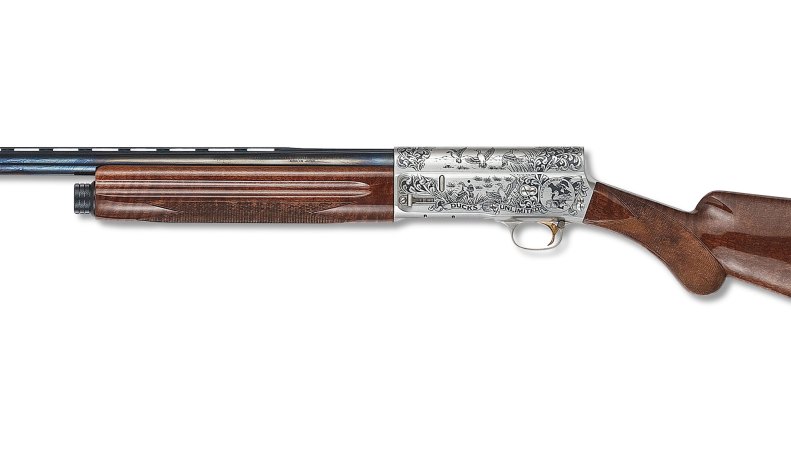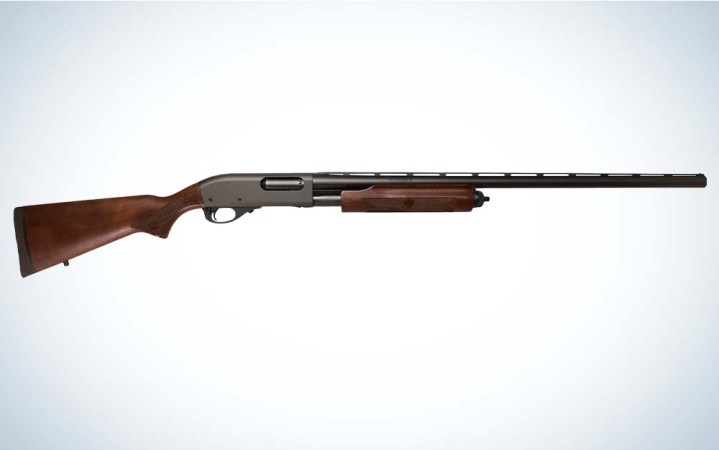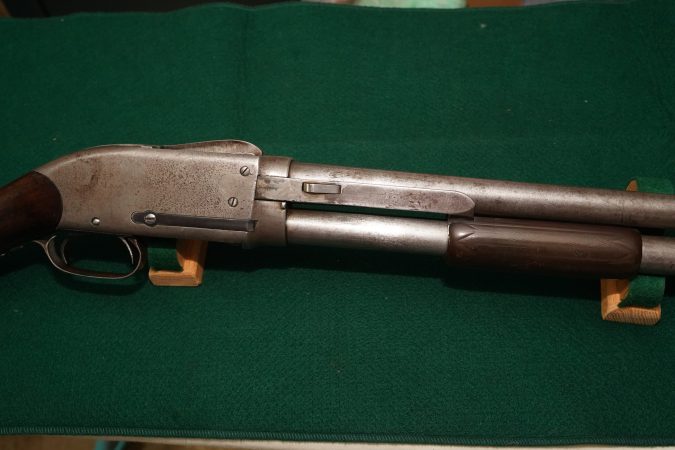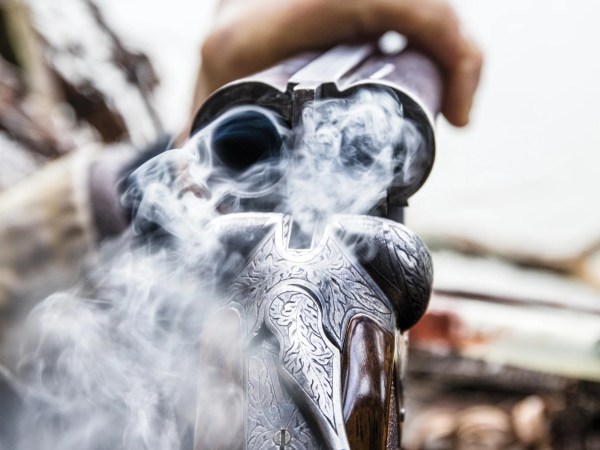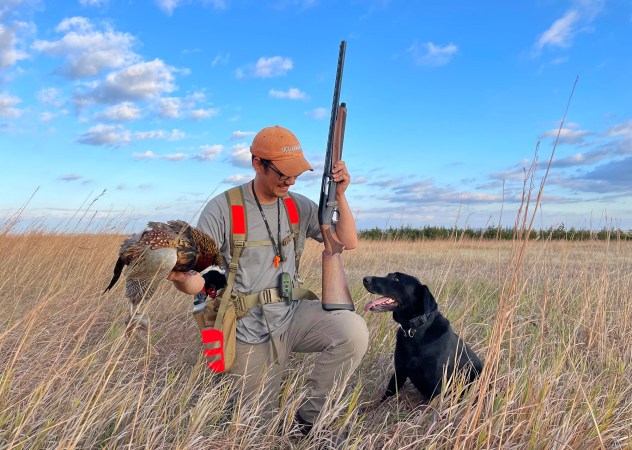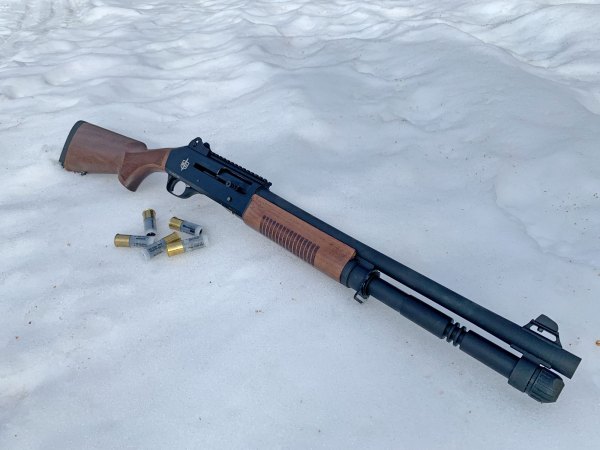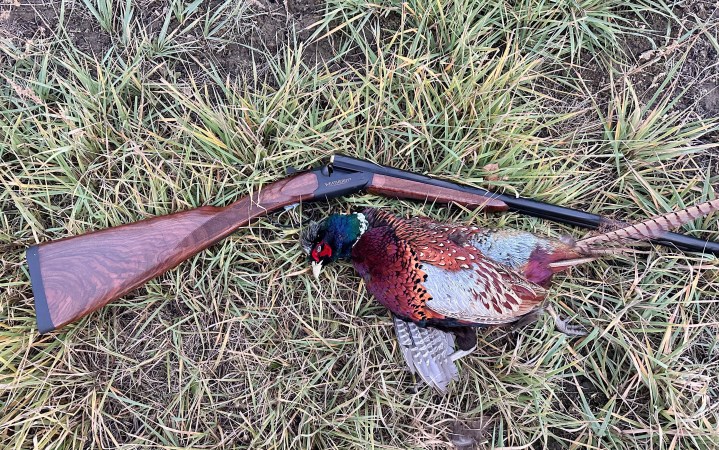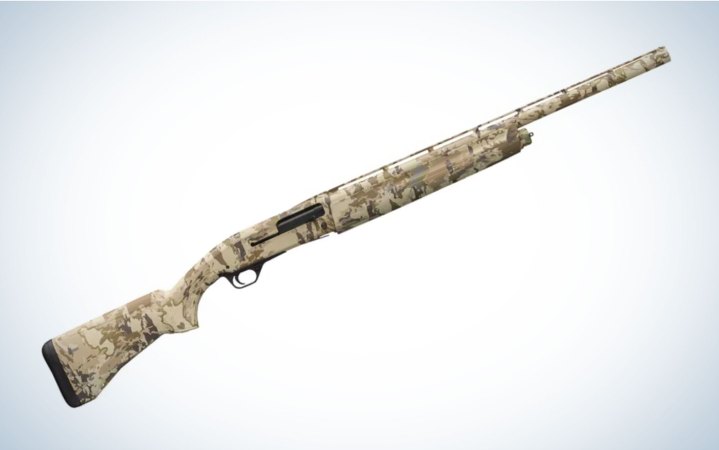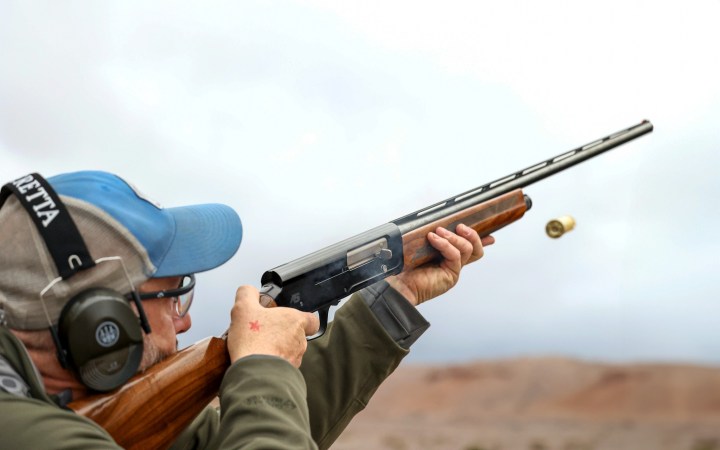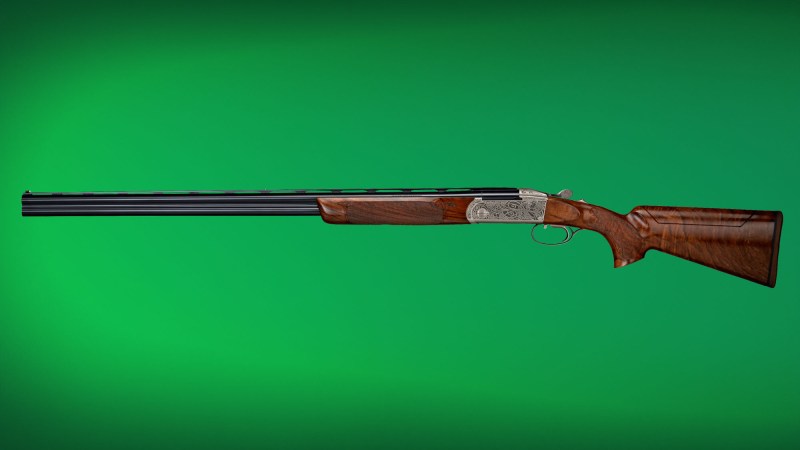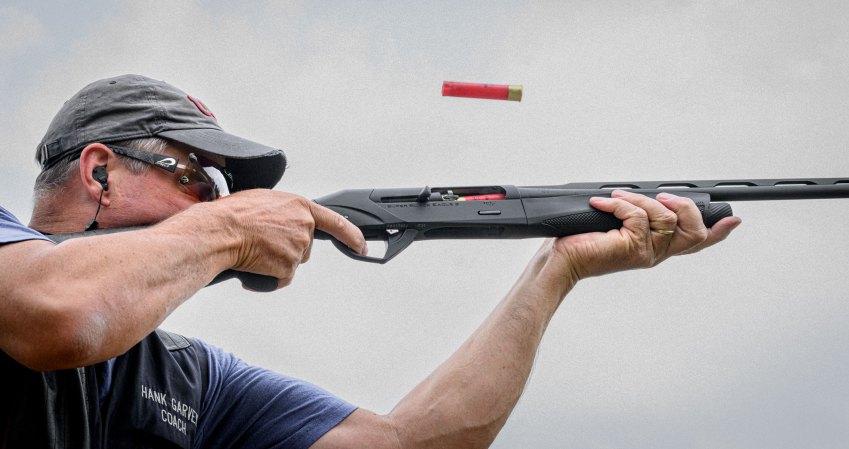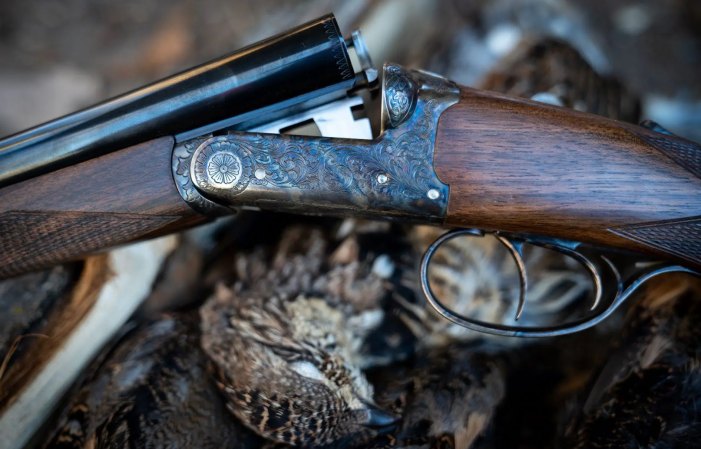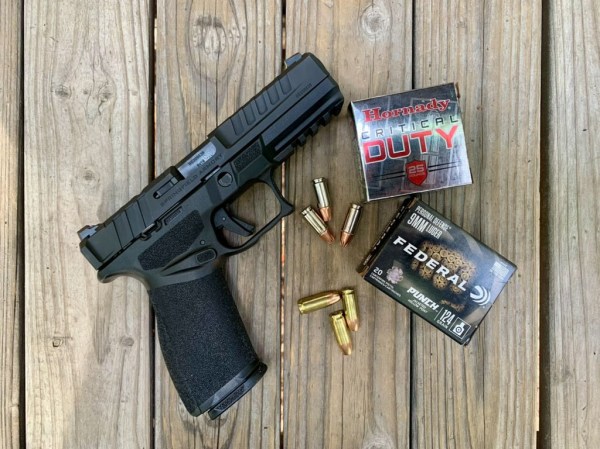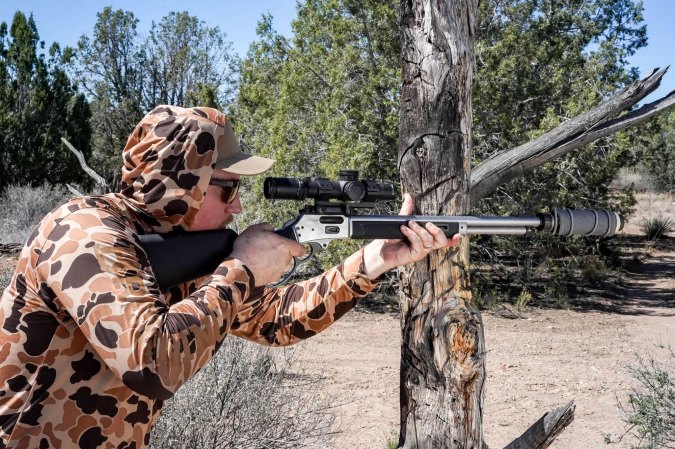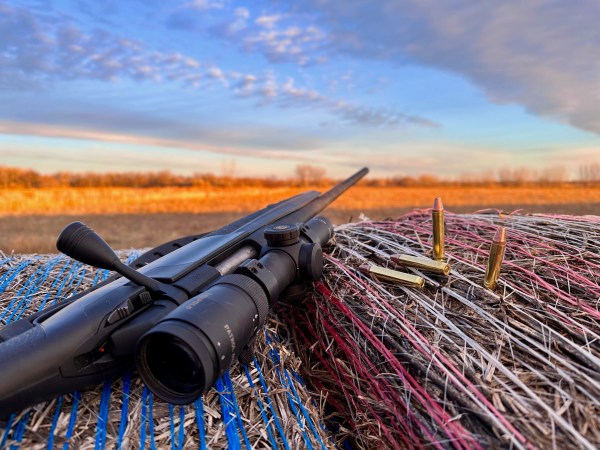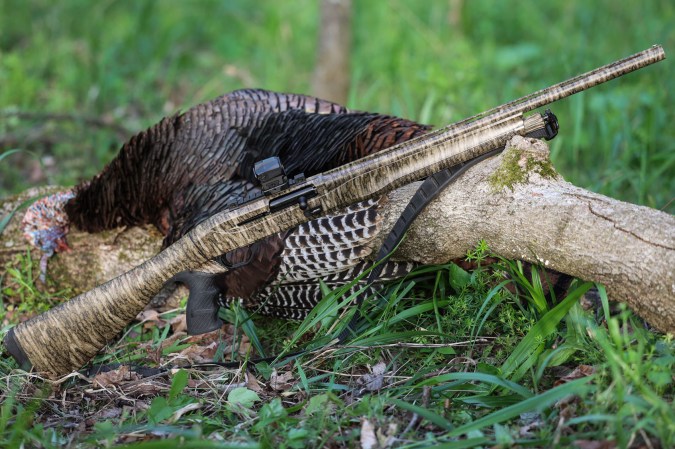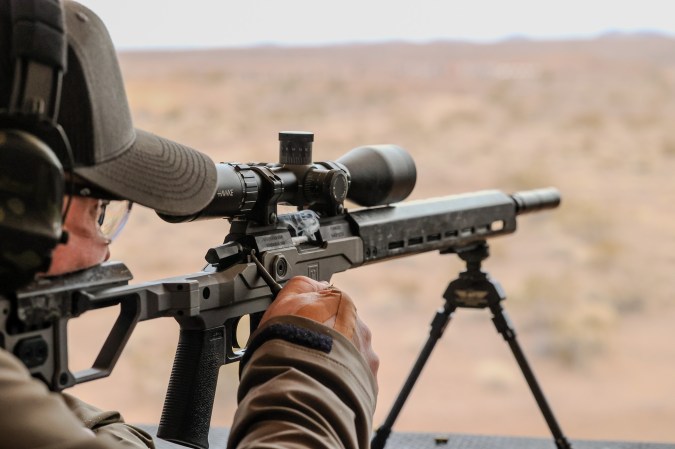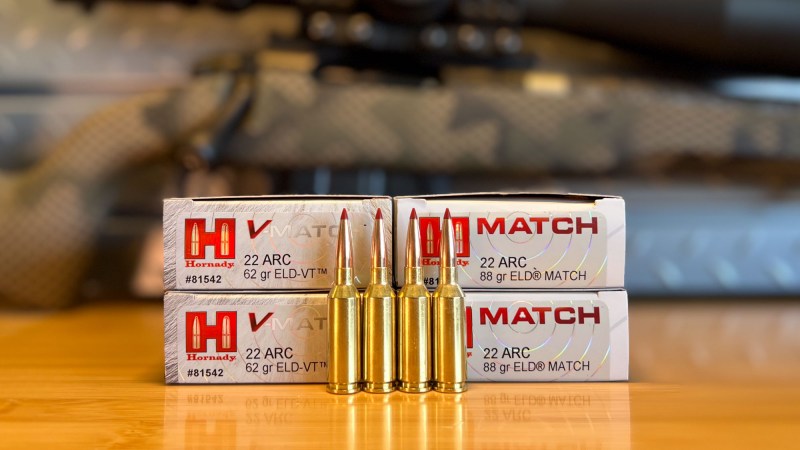We may earn revenue from the products available on this page and participate in affiliate programs. Learn More ›
My grandfather’s Winchester Model 12 is the only possession of his I have. It was passed down to me after his firstborn son (my uncle) died several years ago. Most hunters and shooters hold on to guns like these in order to feel a sense of closeness to their loved ones. But I never knew my grandfather. He died when my father was just a boy. So, to me this Model 12 represents a hint at who Obed Genzel might have been. At the very least I know that he was the kind of man who would stamp his name on the underside of the fore-end.
But I’m far from the only hunter who owns a hand-me-down Winchester Model 12. Over the years, I have seen countless used Model 12s on gun store racks. Most are in a condition similar to my grandfather’s gun, which is to say well used but still functional. The Winchester Model 12 always was, and continues to be, a workhorse shotgun. I do not doubt that Obed’s Model 12 will someday be handed down to another Genzel and I’m confident it will keep running just as reliably for them.
Here is a closer look at why the Winchester Model 12 was such a unique shotgun and why the platform has stood the test of time.
Winchester Model 12 Specifications
- Gauge: 12 (tested), 16, 20, 28
- Action: Pump
- Capacity: 6+1
- Chamber: 2¾” (tested), 2 ½” (some 20 gauges), 3” (Heavy Duck)
- Barrel length: 26”, 28” (tested), 30”, 32”
- Choke: Fixed Full (tested), C, No. 1 skeet, No. 2 skeet, C, IC, M, IM
- Front sight: Red fiber-optic
- Finish: Blued steel, walnut
- Length: 48”
- Length of pull: 14½”
- Trigger pull weight: 2.13 lbs. (measured over a three pull avgerage)
- Gun Weight: 7.5 lbs
Winchester Model 12 History
Over 2 million Winchester Model 12s were sold from the gun’s debut in 1912 until it was discontinued in 1976. The first Model 12s were 20 gauges, followed by 12 and 16 gauges in 1914 and the 28-gauge in 1937. Winchester also made a Model 42, which was a scaled-down .410 version of the Model 12.
T.C. Johnson designed the Model 12, building off John Browning’s designs of the Model 1893 and 1897. The most significant difference was Johnson’s Model 12 had an internal hammer, so there was no need to cock a hammer before firing. Once a shotshell is chambered, it’s ready to go.
Multiple variants of the Model 12 were engineered and produced, including:
- Standard field
- Tournament grade
- Special trap grade
- Standard trap grade
- M12 trap
- Ladies and junior trap (20-gauge)
- Skeet
- Heavy duck
- Pigeon Grade
- Super Pigeon Grade
Winchester also produced a featherweight model from 1957 to 1962. A riot and trench gun were made for the military and police (more on this later). Winchester manufactured few legit 28 gauges and today they are considered more valuable than the other models. If you’re searching for a 28-gauge Model 12, it’s important to know that there are some fake 28-gauge Model 12s in circulation. You can always look up the gun’s serial number to be sure it’s authentic.
In 1928, some Model 12s came equipped with a Cutts Compensator, originally used to mitigate recoil on military weapons. It was also affixed to the legendary Tommy Gun. The Cutts Compensator became popular with clay shooters in the 1940s and ’50s because it added a bit of weight to the shotgun’s barrel for a smoother swing, dampened recoil, and put the focus on the target (the size of the Cutts kept shooters from aiming the gun). Some Model 12s were outfitted with a Polychoke, Cutts’ competitor.
Production costs brought about the demise of the Model 12. Remington’s debut of the 870 in 1950, introduced a less expensive pump shotgun that emulated the production quality of the Model 12. Then, in 1964, Winchester famously revised its firearms line for cheaper manufacturing. A few custom Model 12s were built into the 1980s, and Miroku trickled out the Browning Model 12, a replica of the Winchester platform, from 1993 to 2006. Those variants are stamped “Made in Japan.”
Winchester Model 12 Military History
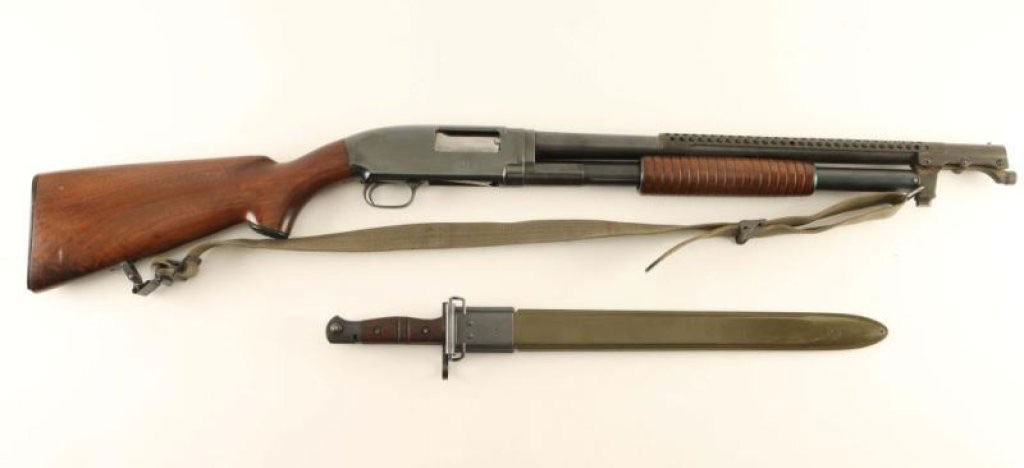
Winchester Collector’s Org
The U.S. Military ordered 777 Model 12s for World War I. Most of those firearms were the riot variant of the gun, built with a shorter barrel. Model 12s were used widely in WWII (around 60,000), and the pump shotgun saw action in the Korean and Vietnam Wars before its retirement. Hollywood movies show soldiers using the trench gun Model 12, which was compatible with a bayonet, to sweep and clear enemy strongholds. It’s true Model 12s were used in this capacity, but they were more commonly carried by soldiers on guard duty.
Operating Winchester’s Model 12
The Model 12 is a smooth-running pump. The fore-end rides on a solid action bar that won’t bend or twist. My grandfather’s gun sometimes has a bit of trouble cycling shells when dirty, but a little oil on the loading gate solves that problem. And because his Model 12 has a 2 ¾” chamber, the travel of the fore-end is slightly shorter, which helps with running the gun quickly.
You can load up to six shotshells in the magazine, but you must hold the first shell in place, or it will jump back into the loading gate. There is a steel cross-bolt safety at the front of the trigger group, which, as a lefty, is more favorable than a safety at the rear of the trigger.
Simply push up on the loading gate to remove unfired shotshells from the magazine tube.
Shooting Grandpa’s Gun

Photo by Joe Genzel
Obed was meticulous about taking care of his Model 12. His gun was manufactured in 1953 but has only a few scratches. Upon inspection of the chamber and barrel, I found them to be clean, with hardly any build-up from spent shotshells. It’s clear Obed shot the hell out of this gun at the trap range, which was one of his few passions, along with hunting and reloading ammunition. The finish of the magazine tube is worn from sliding the fore-end forward and back to cycle the action. There’s also a tiny hole in the magazine tube, presumably from excessive use.
Some Model 12s had Damascus barrels, but most—like my grandfather’s—have fluid steel barrels, which most gunsmiths I have talked to say have a thickness that is safe to shoot smaller steel shot through. But to stay on the safe side, I only run lead and bismuth through the Model 12. I patterned the gun with a 1⅛-ounce load of lead No. 6s and a 1¼-ounce offering of bismuth No. 4s. To check the point of impact, I shot from 13 yards and found that the core pattern of both loads consistently impacted 3 to 4 inches below my point of aim. After shooting several rounds on paper at various distances, it was clear why so many hunters toted the fixed full choke variant of this gun into the turkey woods. It would be devastating on gobblers inside 25 yards with lead or bismuth. It also threw patterns that would fold ducks and pheasants out to 40 yards.
T.C. Johnson built the Model 12 so that it would fit most shooters. I’m 6-foot-4 and 275 pounds, and the Model 12 feels like an extension of my arms when I swing it on clays or birds. The walnut of the fore-end has an oil finish and is checkered for grip. The wooden stock has the same oil finish as the fore-end, but there is no checkering around the pistol grip. I prefer the smooth grip for shooting trap because it doesn’t agitate my fingers like checkering does. Though when it rains, the grip gets slick. This Model 12 has a ventilated rib with an aftermarket fiber-optic front sight, but other variants had flat ribs or none at all.
Thanks to the gun’s weight, the Model 12’s recoil is tame. Shooting Hevi-Bismuth, which carries a payload of 1¼ ounces and a muzzle velocity of 1,450 fps, the felt recoil is a manageable 36.2 foot/pounds. Plus, a very worn-in Redhead Brand recoil pad affixed to the buttstock of my grandfather’s shotgun helps to cushion the blow.
Read Next: 10 Classic Shotguns Every Wingshooter Should Own
Field Stripping the Winchester Model 12

Photo by Joe Genzel
The Model 12 is a takedown, which means it can be quickly broken down into two separate pieces. To remove the barrel and fore-end from the stock and receiver, there is a steel pin at the top of the magazine tube, which you must push forward and turn. This will disengage the magazine tube from the receiver. Then, you need to rotate the barrel left or right to remove it from the action. Steel grooves interlock to connect the barrel and the receiver. To free the barrel, you twist and pull.
For reassembly, line up the steel barrel grooves with the smooth steel slots in the action and rotate the barrel down. There is an arrow on the magazine tube and the interior of the receiver. Rotate the steel pin at the top of the magazine tube so they line up. This will engage the magazine tube with the receiver. Push the pin at the top of the magazine tube in the opposite direction you did to disassemble the Model 12, and the gun will be ready to shoot.

Final Thoughts on the Winchester Model 12
Shooting a heavy, balanced, well-made pump shotgun like the Model 12 is always a joy. The Model 12 is over a century old now, and you will still find it on gun shelves across the country for as little as $450. If you can find one in decent condition, the Model 12 is still a viable choice as a workhorse pump shotgun today. That’s especially true considering the market of modern pump shotguns, which are mostly low-cost, Turkish-made models with homely looks.
Sure, you’ll have to take good care of an old shotgun like this to prevent it from rusting in inclement weather, but if you do, there’s a good chance you’ll be able to pass it down to your grandkids.


